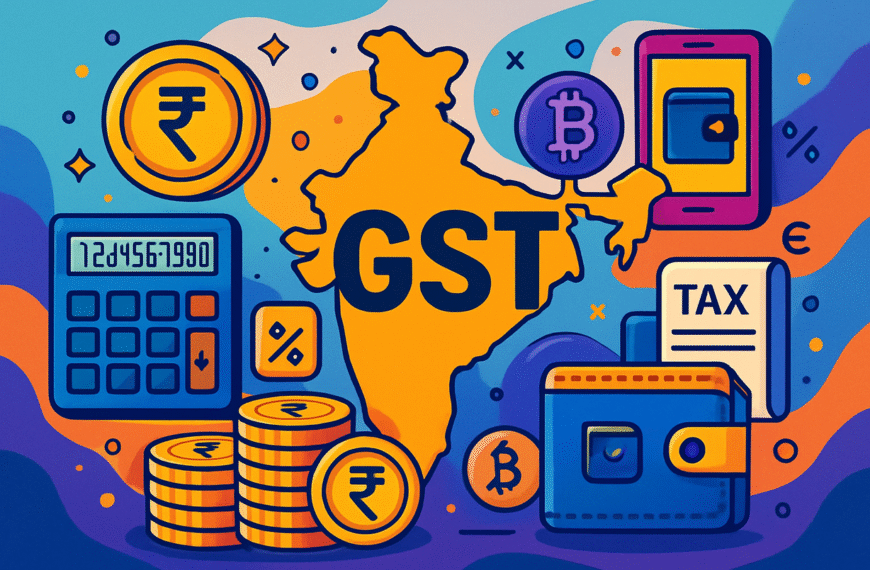1. What is the Stock Market in Simple Words?
Short Answer: A place where companies list shares (ownership pieces) and investors buy/sell them.
Detailed Explanation:
Imagine a giant marketplace — like a farmers’ market, but instead of vegetables and fruits, people are buying and selling tiny pieces of companies. These tiny pieces are called shares or stocks.
When you buy a stock, you’re basically saying:
“I believe in this company and want to own a small part of it.”
If the company does well, the value of your piece (your stock) usually goes up, and you can sell it for a profit. If the company struggles, the value can drop, and you might lose money.
Why Does the Stock Market Exist?
- For Companies:
- Companies need money to grow — to open new stores, make new products, or hire more people.
- Instead of taking loans, they can sell shares to the public and get that money.
- For Investors (People Like Us):
- We get a chance to invest our money and hopefully make it grow faster than just keeping it in a bank.
How It Works
- Companies list themselves on the stock market (called an IPO – Initial Public Offering).
- People can now buy and sell their shares through a stock market exchange (like BSE or NSE in India, or NYSE and NASDAQ in the USA).
- Prices go up and down based on demand and supply — if many people want a stock market, the price goes up; if people sell it, the price goes down.
Two Main Ways to Make Money
- Capital Gains – Buying a stock market at a lower price and selling it at a higher price.
- Dividends – Some companies share part of their profits with shareholders, paid directly into your account.
2. How to Invest in the Stock Market for Beginners?
Step-by-Step Guide:
- Learn Basics: Read books like The Intelligent Investor.
- Open Demat Account: Use Zerodha, Groww (takes 10 mins).
- Start Small: Invest via SIP in index funds (e.g., Nifty 50).
- Avoid Tips: Focus on long-term growth, not daily trading.
1. Understand the Basics
Before you invest a single rupee, learn the key terms:
- Stock / Share: A small piece of ownership in a company.
- Broker / Demat Account: Your online account to buy and sell shares.
- Stock Exchange: The platform where buying/selling happens (like NSE & BSE in India).
📌 Tip: Think of this as learning driving rules before getting on the road.
2. Open a Demat and Trading Account
You can’t walk into the stock market with cash — you need a Demat account (to store your shares digitally) and a Trading account (to buy/sell).
- Choose a trusted broker like Zerodha, Upstox, Groww, or Angel One.
- Submit KYC documents (Aadhaar, PAN, bank details).
3. Decide Your Investment Budget
Only invest money you can afford to keep aside for a long time. The stock market is not a quick-rich scheme; it’s a wealth-building tool.
- Start small: ₹500–₹2,000 per month is fine for beginners.
4. Learn Before You Leap
Don’t buy random stocks market based on tips from friends or social media.
- Read company basics: What do they sell? How do they earn?
- Look at their past performance and future potential.
5. Choose Your Investment Style
There are two main approaches:
- Long-Term Investing (Safe for Beginners):
- Buy strong companies and hold for years.
- Focus on “blue-chip” stocks market like TCS, Infosys, HDFC Bank, Reliance.
- Short-Term Trading (Riskier):
- Buy and sell within days or months to make quick profits.
- Requires market knowledge and constant monitoring.
6. Diversify Your Portfolio
Don’t put all your money into one stock. Spread it across:
- Different sectors (IT, banking, pharma, FMCG).
- Different companies (large-cap, mid-cap, small-cap).
7. Monitor But Don’t Panic
Stock prices go up and down daily — it’s normal.
- Check your portfolio weekly, not every minute.
- Avoid emotional decisions when prices drop.
Pro Tip: Use virtual money apps (like Moneybhai) to practice first.
3. Trading vs. Investing: What’s the Difference?
| Investing | Trading |
|---|---|
| Long-term (5+ years) | Short-term (days/minutes) |
| Focus on fundamentals | Focus on price trends |
| Lower risk | High risk/reward |
Example: Buying Reliance for 10 years = Investing. Buying Reliance to sell next week = Trading.
4. Intraday vs. Long-Term: Which is Better?
- Intraday: High risk, needs time/skill, 90% lose money.
- Long-Term: Compounding magic (e.g., ₹10,000 in HDFC Bank in 2000 = ~₹5 crore today).
Here’s a clear, friendly, and detailed explanation so your readers can easily understand Intraday vs. Long-Term investing and decide which fits them best.
Intraday vs. Long-Term: Which is Better?
When you enter the stock market, one of the first questions you’ll face is:
Should I do intraday trading or go for long-term investing?
Let’s break it down like a conversation between two friends.
1. What is Intraday Trading?
Intraday trading means buying and selling stocks within the same day.
- You don’t hold shares overnight.
- The goal is to make quick profits from small price changes.
📌 Example: Buy 100 shares of XYZ at ₹200 each in the morning, sell them at ₹205 in the afternoon — profit = ₹500 (minus brokerage).
✅ Pros:
- Can make money quickly.
- Opportunities every day.
❌ Cons:
- High risk — prices can drop suddenly.
- Requires constant monitoring and market knowledge.
- Stressful and time-consuming.
2. What is Long-Term Investing?
Long-term investing means buying stocks and holding them for months or years.
- You benefit from company growth and compounding.
- Works well for building wealth slowly and steadily.
📌 Example: Buy 100 shares of ABC at ₹100 each in 2020, sell them at ₹250 in 2025 — profit = ₹15,000 (plus dividends).
✅ Pros:
- Lower stress — no need to watch the market all day.
- Lower risk if you choose strong companies.
- Takes advantage of compounding and company growth.
❌ Cons:
- Requires patience.
- Your money is locked for a longer time.
3. Which is Better for You?
| Factor | Intraday Trading | Long-Term Investing |
|---|---|---|
| Time Required | High – must watch markets all day | Low – check portfolio occasionally |
| Risk Level | High | Lower (if diversified) |
| Returns | Quick but uncertain | Slow but more stable |
| Knowledge Needed | Advanced technical analysis | Basic company fundamentals |
| Best For | Active traders, risk-takers | Beginners, patient investors |
Verdict: Beginners should start with long-term.
5. How to Select Good Stocks for Long-Term?
Use QARP (Quality, Growth, Reasonable Price):
- Quality: Profitable companies (e.g., TCS, Asian Paints).
- Growth: Rising sales/profits (check last 5 years).
- Valuation: Avoid overpriced stocks (PE > 30 is risky).
Long-term investing is like planting a tree — you don’t see results overnight, but with the right care, it grows into something valuable.
The secret is choosing strong, healthy companies that can grow for years.
Here’s how to pick them:
1. Understand the Business
- Invest in companies you understand — their products, services, and how they make money.
- If you can’t explain in simple words how the company earns, you probably shouldn’t invest in it.
📌 Example: If you use HDFC Bank’s services or drink Nestlé products, you already know their business.
2. Check the Company’s Track Record
- Look for consistent sales and profit growth over the last 5–10 years.
- A good company shows stability even during economic slowdowns.
📌 Tools: Websites like Moneycontrol, Screener.in, or your broker’s research section.
3. Look at the Financial Health
Some key numbers to check:
- Revenue Growth: Increasing every year.
- Net Profit Margin: Higher margins mean better efficiency.
- Debt-to-Equity Ratio: Lower is better (company is not drowning in loans).
- Return on Equity (ROE): Above 15% is generally good.
4. Competitive Advantage (Moat)
A good long-term stock should have something competitors can’t easily copy, like:
- Strong brand (Tata, Asian Paints, Apple).
- Unique technology.
- Large market share.
- Loyal customer base.
5. Management Quality
- Honest and capable leaders grow a company; poor leadership can ruin it.
- Read annual reports, check interviews of the CEO/management team.
6. Industry & Future Potential
- Invest in sectors likely to grow in the next 10–20 years (renewable energy, healthcare, technology, consumer goods).
- Avoid industries facing permanent decline.
7. Reasonable Price
- Even the best company can be a bad investment if you overpay.
- Check P/E ratio (Price to Earnings) compared to industry average.
- Buy when the stock is fairly valued or undervalued.
8. Diversify
- Don’t put all your money into one company or one sector.
- Spread investments across 8–12 strong companies in different industries.
6. What is PE Ratio? How to Use It?
- Definition: Price-to-Earnings ratio (Market Price ÷ Earnings per Share).
- Rule:
- PE < 15 = Undervalued (good for value investing).
- PE > 25 = Overvalued (check growth justification).
Example: If ITC has PE 20 and industry average is 25, it may be undervalued.
7. Best Technical Indicators for Trading
- RSI (30-70): Shows overbought/sold zones.
- Moving Averages (50/200 DMA): Identifies trends.
- MACD: Predicts momentum shifts.
Caution: Never rely on just 1 indicator!
8. How to Avoid Losses in Stock Market?
- Diversify: Don’t put all money in 1 stock/sector.
- Stop-Loss: Auto-sell if stock falls 5-10% (saves capital).
- Avoid FOMO: Don’t buy because “everyone is buying.”
Here’s how you can avoid big mistakes:
1. Never Invest Without Knowledge
- Don’t buy stocks just because a friend, social media post, or TV “expert” says so.
- Learn basic terms, how the market works, and research before you invest.
📌 Rule: If you don’t understand how a company makes money, don’t invest in it.
2. Avoid Putting All Money in One Stock
- This is like putting all your eggs in one basket — if it drops, everything breaks.
- Diversify across sectors like banking, IT, FMCG, pharma, and energy.
3. Start Small and Increase Gradually
- Beginners should start with a small amount to learn without risking too much.
- Once you gain experience, you can slowly increase your investment.
4. Have a Stop-Loss
- A stop-loss is a set price at which you sell to limit your losses.
- Example: If you buy at ₹200, you might set a stop-loss at ₹180.
- This prevents small losses from becoming big ones.
5. Avoid Emotional Decisions
- Fear and greed are your biggest enemies.
- Don’t panic-sell during market dips or buy blindly during market rallies.
6. Focus on Long-Term Investing
- Short-term trading can be risky, especially for beginners.
- Long-term investors have a better chance of recovering from temporary losses.
7. Research the Company’s Fundamentals
- Check profit growth, debt levels, and market position.
- Strong companies are more likely to survive market downturns.
8. Don’t Borrow to Invest
- Never take loans or use credit cards to invest — if the stock falls, you still owe the money plus interest.
9. Keep Learning
- The more you learn, the fewer mistakes you make.
- Read books, watch investor interviews, and follow credible market news.
💡 Golden Rule: Protect your capital first. Profit comes second.

9. What is Stop-Loss? How to Use It?
Here’s a clear, simple, and beginner-friendly explanation of Stop-Loss with practical tips on how to use it — perfect for your blog.
What is Stop-Loss?
📌 Example:
- You buy a stock at ₹200.
- You decide you don’t want to lose more than ₹20 per share.
- You set a stop-loss at ₹180.
- If the stock price drops to ₹180, it gets sold automatically — preventing bigger losses.
Why Use Stop-Loss?
- Protects your money from big market swings.
- Prevents emotional decision-making.
- Especially useful for intraday traders and beginners.
Types of Stop-Loss Orders
- Stop-Loss (SL):
- Used when you want to limit losses on a stock you already own.
- Example: Buy at ₹500, set SL at ₹480.
- Stop-Loss Market (SL-M):
- Automatically sells at the best available market price once your stop price is hit.
- Stop-Loss Limit (SL-L):
- Sells at a specific price you set — but may not execute if no one buys at that price.
How to Use Stop-Loss Effectively
- Decide Your Risk Level Before Buying
- Example: If you can handle a 5% loss, set SL accordingly.
- Don’t Set It Too Close
- If the stock normally fluctuates 2–3% daily, a tight SL might trigger too soon.
- Adjust as Stock Price Rises (Trailing Stop-Loss)
- Example: Buy at ₹200, SL at ₹180. If price rises to ₹250, move SL to ₹230 — locking in profits.
- Combine with Research
- SL is a safety net, not a substitute for picking good stocks.
💡 Pro Tip: For beginners, a 5–10% stop-loss is a safe range for most trades, but it depends on the stock’s volatility.
Example: You buy Tata Motors at ₹500. Set stop-loss at ₹450. If price hits ₹450, shares auto-sell to limit loss.
Pro Tip: Use trailing stop-loss (adjusts with price rise).
10. Can I Become Rich by Trading Stocks?
Truth:
- Trading: 95% fail due to emotions/leverage.
- Investing: Warren Buffett way (slow but steady) works.
The short answer is: Yes, it’s possible — but it’s not easy, and it’s not guaranteed.
Many people dream of making a fortune from the stock market. Some have done it, but far more have lost money. The difference lies in knowledge, discipline, and patience.
How People Get Rich in the Stock Market
- Long-Term Investing
- Buying strong companies and holding them for years.
- Benefit from compounding and company growth.
- Example: ₹10,000 invested in Infosys IPO (1993) is worth crores today.
- Trading (Short-Term Profits)
- Requires skill, market knowledge, and quick decision-making.
- Successful traders use strategies, risk management, and discipline — not luck.
- Dividends & Reinvestment
- Companies share profits with shareholders as dividends.
- Reinvesting them grows wealth faster.
The Hard Truth
- Most beginners lose money because they trade without proper knowledge.
- Greed, fear, and overconfidence are common reasons for failure.
- Trading is a skill — just like playing cricket or running a business — and it takes time to master.
If You Want to Get Rich, Follow These Rules
- Learn Before You Earn — Understand how markets work.
- Start Small — Gain experience without risking big money.
- Control Risk — Use stop-loss to limit losses.
- Avoid Emotional Decisions — Stick to your plan.
- Think Long-Term — Big wealth usually comes from patience, not overnight wins.
Final Thought:
- If you’re after quick riches, the market can punish you.
- If you’re willing to learn, manage risks, and stay patient, the market can reward you beyond your expectations.
Realistic Path: Invest ₹5,000/month in index funds for 20 years → ~₹1 crore (12% returns).
11. Best Stocks to Buy in 2025?
Top Stock Picks for 2025
India-Focused Long-Term Stocks
- Reliance Industries – A diversified powerhouse spanning energy, telecom, retail, and green ventures, making it a resilient long-term pick (Bisfinans, Microeco, Capital Mantra).
- HDFC Bank – Known for consistent growth, strong digital presence, and asset quality—ideal for SIP strategies (Bisfinans, Capital Mantra, investopedia.co.in).
- Tata Consultancy Services (TCS) – Reliable IT giant with strong global demand amid digital transformation trends (Bisfinans, Capital Mantra, Microeco).
- Infosys – Innovator in cloud and AI-driven solutions, making it another solid tech bet (Bisfinans, investopedia.co.in, Microeco).
- Tata Power – A leader in renewable energy with ambitious EV charging infrastructure goals (investopedia.co.in, Stocks Insight India).
- ITC – Well-diversified conglomerate across FMCG, agribusiness, and more; analysts see modest upside potential (The Economic Times, Wikipedia).
- Aditya Birla Real Estate – Recommended by Emkay Global with ~34% upside projected (The Economic Times).
- Axis Bank, BHEL, Maruti Suzuki, Zee, Cyient, Havells, Metropolis, and more — part of JM Financial’s top 12 long-term picks, selected using a growth-at-reasonable-price strategy (mint).
- HDFC AMC & Nippon Life AMC – Expected to deliver 10–20% in returns over the medium term (The Economic Times).
Stock Picks (Global & Sector Themes)
- Bajaj Auto – Goldman Sachs recommends it with a ₹9,500 target, citing stable margins despite production constraints (The Times of India).
- Paytm & Nykaa – Recommended by CA Rudramurthy as good long-term accumulation plays amid current market caution (The Economic Times).
- Nvidia – The AI chip titan that’s now worth \$4 trillion, expected to continue riding strong demand in data centers (Investors, Wikipedia).
- Arista Networks & Astera Labs – Beneficiaries of booming data center infrastructure; Astera posted 150% revenue growth recently (Barron’s).
- Defence & Airspace Stocks – Companies like AeroVironment and AIRO are drawing bullish investor interest due to rising demand for autonomous systems (Barron’s).
- Nuclear Energy Plays – Stocks like Oklo and Nano Nuclear are outperforming thanks to AI/data center demand and supportive policies (Business Insider).
- Undervalued sectors (housing, consumer goods, small-caps) — Morgan Stanley sees them as potential turnaround plays ahead of anticipated rate cuts (Business Insider).
Summary Table
| Region / Sector | Key Stocks & Themes |
|---|---|
| Indian Long-Term Picks | Reliance, HDFC Bank, TCS, Infosys, Tata Power, ITC, Axis Bank, Maruti, BHEL, etc. |
| Fintech & Digital | Paytm, Nykaa |
| Global Tech & AI | Nvidia, Arista Networks, Astera Labs |
| Defense/Space Tech | AeroVironment, AIRO |
| Clean & Nuclear Energy | Oklo, Nano Nuclear Energy |
| Value/Recovery Plays | Undervalued sectors like housing & consumer goods |
(Always research before buying!)
12. What Are Penny Stocks?
- Definition: Stocks priced under ₹10 (e.g., Suzlon, Yes Bank).
- Risk: 99% are scams/poor companies. Only for high-risk traders.
Better Option: Small-cap funds (less risky than penny stocks).
13. How to Open a Free Demat Account?
Steps:
- Compare brokers (Zerodha vs Groww vs Upstox).
- Submit PAN/Aadhaar online.
- Complete e-KYC (no physical documents needed).
Charges: ₹0 account opening (but ₹20/trade brokerage).
14. Best Trading App in India?
| App | Best For |
|---|---|
| Zerodha | Low-cost trading |
| Groww | Beginner-friendly UI |
| Upstox | Advanced charts |
Winner: Zerodha (lowest fees).
15. What is SIP in Stocks? How Does It Work?
- SIP (Systematic Investment Plan): Invest fixed amount monthly (e.g., ₹5,000 in Nifty ETF).
- Benefit: Averages purchase cost (no need to time market).
Example: ₹5,000/month SIP for 10 years = ~₹12 lakhs (12% returns).
Disclaimer:
This article is for educational and informational purposes only. The stocks and companies mentioned here are not paid promotions and not investment advice. They are shared based on publicly available information and market research. Please do your own research or consult a certified financial advisor before making any investment decisions. The stock market involves risk, and past performance does not guarantee future results.


















